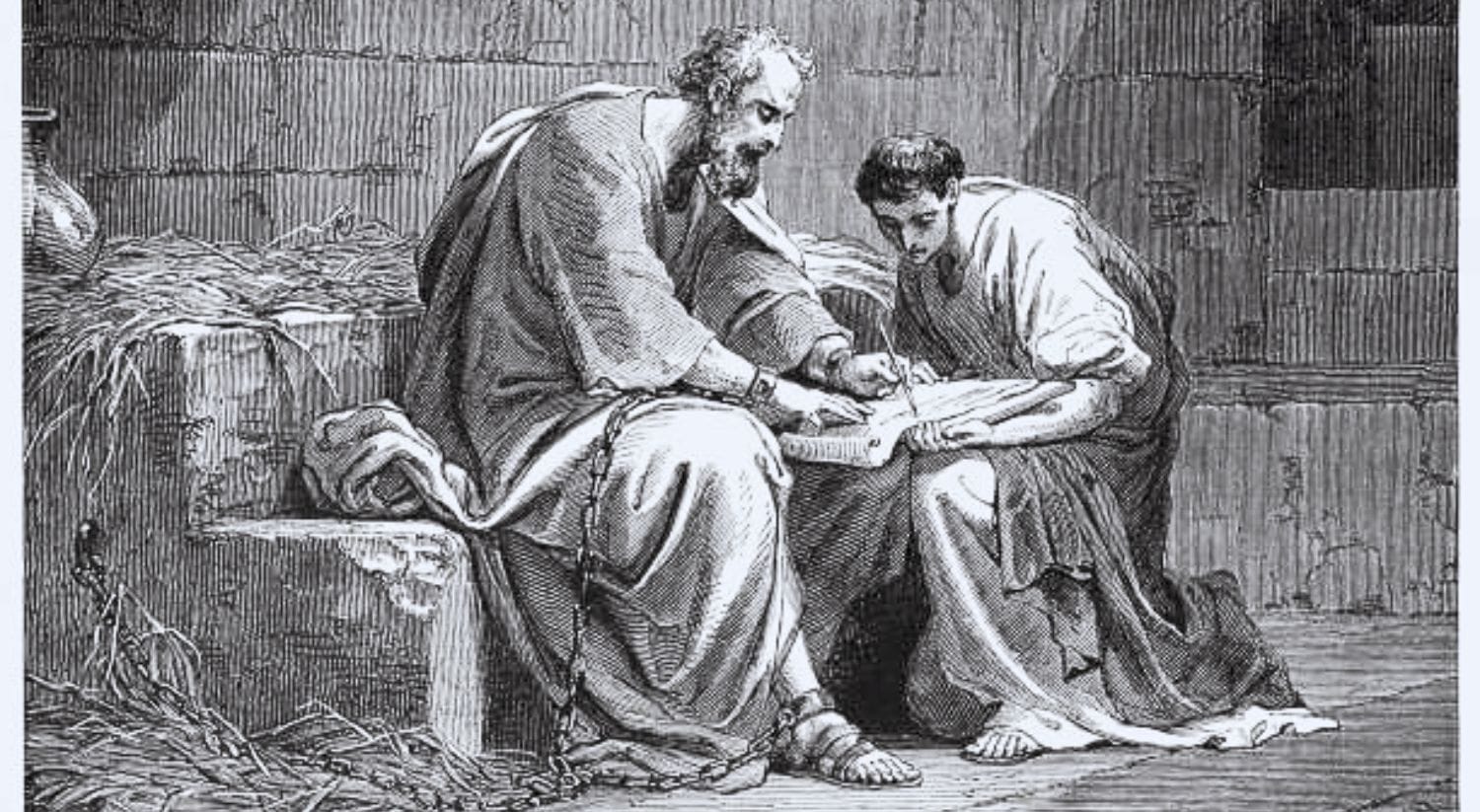
Analyzing the translation of the Bible is, to say the least, a fascinating topic. The Bible is considered the most sacred book in religions such as Catholicism and Protestant Christianity. It is also the first best-seller in history and the book chosen by Gutenberg to be the first printed book in the world. Since then, the translation of the Bible has been unstoppable, reaching languages as far removed from its origins as Chinese and various Indigenous languages.
However, beyond religion, the translation of the Bible is an intriguing historical process. From the earliest translations from Aramaic and Hebrew to modern versions in English and Spanish, the Bible’s translation has shaped not only language but also cultural and religious beliefs. But did you know that some major errors were made in the process? Yes—mistakes that have persisted for centuries and have even shaped entire beliefs.
Today, we will explore some of these centuries-old translation of the Bible errors that have led to misinterpretations of key elements. Get ready for a fascinating journey into the power of translation, even in religion and belief systems.
Why was the bible translated in the first place?
Before we begin, let’s clarify something: this analysis will be as objective and linguistically focused as possible. Thus, it will keep the religious perspectives aside. That means we won’t engage in divine or mystical interpretations of the text. Since the Bible is a sacred book for billions of people worldwide, we will avoid value judgments and treat it purely as a linguistic and historical phenomenon.
Our goal is to be as respectful as possible regarding the Bible’s content and its significance for millions. The translation of the Bible errors we will discuss are not meant to challenge any religious beliefs. Nor question the Bible’s teachings. Instead, this article seeks to highlight how, like any other text, the translation of the Bible has been influenced by human hands—and sometimes, by misinterpretations from translators that have led to misconceptions.
This article will be very similar to our previous exploration of catastrophic translation mistakes—and as you’ll soon see, the Bible is no exception.
But before diving into these translation errors, let’s first examine how the Bible was translated throughout history.
No, the Bible was not written by a single person
From the myth of Inanna and Enki to the latest best-seller by your favorite author, most books are written by just a few hands. Every book is shaped by historical and personal factors, such as the author’s ideology, the time period in which it was written, and its intended purpose.
However, some of the most important books in history were not written by a single identifiable author. That may sound strange, but it’s actually quite simple. Books like the Bible were compiled from oral traditions that existed long before the widespread use of writing. The Iliad and the Odyssey are perfect examples: even though their authorship is attributed to Homer, they were published hundreds of years after his death.
Many famous works—such as chivalric tales, the Popol Vuh, or even the legends of your own culture—don’t have a single author we can credit. Why? Because they originated as oral traditions until someone decided to put them into writing.
So, what does this have to do with the translation of the Bible? The next section will make things much clearer.
From oral tradition to the Bible on your nightstand
The Bible underwent a unique transformation process. Many of the books of the Old and New Testaments were written centuries after the events they describe. As a result, they contain both authentic elements and additions by the scribes who recorded them.
Ancient scribes collected stories passed down through generations and put them on paper. Some texts, like the letters of the apostles, were written by the apostles themselves—or by someone who knew them. This means that there is no single “author of the Bible” to whom we can attribute its creation.
What did exist, however, was a diverse group of scribes who contributed to the writing of the Bible. These scribes came from various regions. This means that many original texts of the Bible were written in Aramaic, Hebrew, and Greek. Additionally, some parts were recorded in regional languages and local dialects.
This linguistic diversity became a challenge when Rome—and specifically, Emperor Constantine—adopted Christianity as its official religion. In an effort to unify biblical texts, Constantine ordered the translation of the Bible into a single language.
The translation of the Bible from multiple languages to Latin
Skipping over thousands of years in just a few paragraphs, we can get a general idea of the translation of the Bible. Throughout history, its translation has undergone several stages of degradation:
- Oral transmission – Before being written down, biblical stories were passed from person to person, much like a giant game of “broken telephone” over generations.
- Early written versions – When scribes finally recorded these oral traditions, they often added their own interpretations or omitted parts considered “inconvenient” or inappropriate.
- First formal translation efforts – When the early Christian councils organized biblical texts, scholars from across the empire gathered to “clean up” existing narratives. This was the first major editorial intervention, in which Christian monks shaped the text to fit religious doctrine.
During the transition from Aramaic, Hebrew, and Greek to Latin, biblical texts were altered to align with political and religious agendas. One of the main goals of these translations was to ensure that the content was “politically correct” and acceptable to the emperor. But this was far from the last time the Bible’s translation was modified.

The middle ages and the printing press: Censorship and edits in the translation of the Bible
Without diving into a boring history lesson, let’s recall what is often called the “Age of Darkness“. During this time, the Church held immense power over people’s lives—at least throughout much of Europe and the Western world. Monks and friars controlled education, and every written text had to pass through their hands before reaching libraries.
These medieval scribes, armed with scissors and ink, made “minor edits” to the translation of the Bible. Even today, no one knows exactly how much of the original meaning was lost or changed.
Later, Gutenberg invented the printing press and made it possible to mass-produce the Bible. Those first prints still had to pass through ecclesiastical approval. The version that eventually reached the world had already undergone a significant amount of revision.
What were the consequences of these revisions in the translation of the Bible?
Some of these modifications remain one of the great mysteries of history. However, others have resulted in clear translation errors that have shaped religious beliefs for centuries.
Up next, we’ll explore some of the most surprising and influential mistakes in the translation of the Bible—some of which might change the way you see certain biblical passages forever.
The most important errors in the translation of the Bible
As we have seen so far, the translation of the Bible was a historical process that took thousands of years. From oral legends and tales to the printing of the most widely published book in history, its journey has been long and complex. Regardless of its religious significance, the Bible is the most translated book in human history.
It has borrowed texts from the Talmud and the Torah, and in turn, some of its verses have influenced the Quran and other religious texts. This makes the Bible’s translation a fundamental pillar of global culture, religion, and education.
For this reason, it is crucial to understand how certain translation of the Bible errors have altered its original meaning over time. Here are some of the most notable mistakes.
Moses and his “horns” instead of “rays of light”
In the 4th century, Saint Jerome translated the Bible into Latin, creating the Vulgate—the official version of the Catholic Church for over a thousand years. However, his translation introduced several interpretative errors, one of the most famous being the case of Moses’ “horns”.
The mistake originated from the Hebrew word qaran, which means “radiance” or “to shine”. Saint Jerome, whether intentionally or by accident, translated it as “horns”. As a result, many medieval depictions of Moses show him with horns, rather than a radiant face.
If you look at some statues and paintings of the patriarch of Judaism, you might see a horned Moses instead of one illuminated with divine light.
The virgin or simply a “young woman” in the book of Isaiah?
This is one of the most significant errors in the translation of the Bible. In Hebrew, Isaiah’s prophecy uses the word almah, which means “young woman”. However, in the Septuagint, the first known translation of the Bible, almah was translated as parthenos.
The issue? In Greek, parthenos means “pure” or “virgin”, specifically referring to sexual purity. This seemingly small error played a major role in shaping the interpretation of Jesus’ birth.
So, how different would Christian history be if Jesus had been described as being born to a young woman rather than a virgin?
The “camel” passing through the eye of a needle in Matthew
Anyone who has read the Bible has probably been puzzled by this famous passage. After all, it doesn’t seem to make much sense in a literal way. According to the translated version, Jesus said, “It is easier for a camel to pass through the eye of a needle than for a rich man to enter the kingdom of heaven.”
However, this odd metaphor may have resulted from a simple translation mistake in Greek. The Greek word kamelos means “camel”, while kamilos means “thick rope”. The two words sound incredibly similar, which could have led to a misinterpretation.
A more logical and practical translation would be:
“It is easier for a thick rope to pass through the eye of a needle than for a rich man to enter the kingdom of heaven.”
Makes more sense now, doesn’t it?
The number of the beast in the book of revelation
The infamous “number of the beast” is widely known as 666. However, some ancient manuscripts suggest otherwise. According to studies of biblical texts, the Book of Revelation originally referenced 616, not 666. This discrepancy may have been due to a copying or translation error during the early years of Christianity.
That said, some historians believe that this change was intentional. The triple six was possibly chosen to “better fit” the description of Nero, one of the most ruthless Roman emperors against early Christians.
The commandment “thou shall not kill”
Moses’ commandment (the radiant Moses, not the “horned” one) is traditionally translated as “Thou shall not kill.” But is this translation correct?
In Hebrew, the original text actually states “lo tirtsach“, which translates to “You shall not murder”. This means that, according to Moses’ Decalogue, there is a clear distinction between intentional homicide and killing in the context of war or justice.
So, the commandment doesn’t necessarily forbid all forms of killing—only unjustified murder. This small but crucial difference could change the way we understand biblical morality.

What If Bible translators had used a translation app?
Let’s do a little thought experiment. Can you imagine ancient scribes using the Talkao translation apps? What if they could have simply typed a text in Aramaic and instantly translated it into Latin? That would have changed everything.
Even during Constantine’s time, if today’s camera translator technology had existed, there would have been no need to transcribe texts manually. Just by scanning a manuscript with a mobile device, the app could have translated it into more than 125 languages.
Although this may sound like a childlike fantasy, the truth is that scientists are already doing something similar today. Around the world, a dedicated group of researchers and linguists is working to correct Bible translation errors using cutting-edge technology.
Through advanced translation systems and OCR (Optical Character Recognition), experts are striving to achieve a more accurate and faithful translation of the ancient scriptures.
And do you know what’s even more fascinating? Many of these scientists are priests, rabbis, imams, and Christian pastors—representing Christianity, Judaism, and Islam.
Right now, we might be witnessing the greatest linguistic revolution in religious history, potentially correcting one of the most significant translation errors ever made.
We’ll see what happens next.










Newsletter